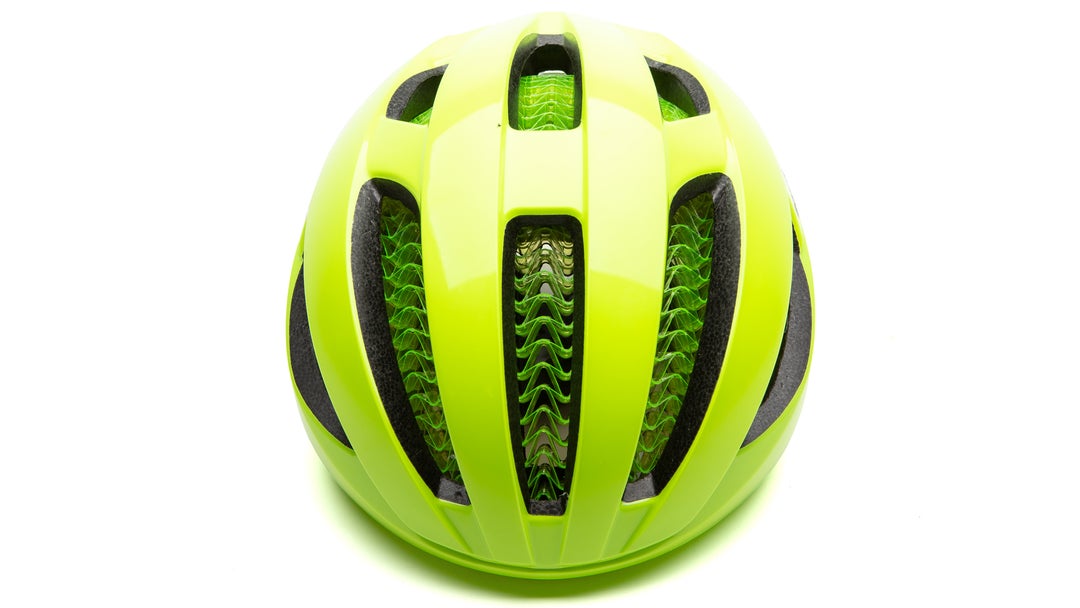New perk! Get after it with local recommendations just for you. Discover nearby events, routes out your door, and hidden gems when you sign up for the Local Running Drop.
While other sports wait for trends to come to them, triathlon has a long, rich history of living at the cutting edge of technology and design. Multisport has led the pack in breaking trends, and while not every tri design is a home run, our sport is a petri dish for exciting innovation. We sat down with our editors and a team of gear experts to whittle through the most exciting and impactful people, products, and more from the last year to see who is truly deserving of Triathlete’s designs of the year. We’ll be announcing the winners one by one here on Triathlete.com. Pick up the March/April issue for a complete list of winners (and don’t forget to enter to win the bike featured on the cover). The winner of the Best Materials Innovation is…

Omius

You may have seen it on Sweden’s Patrick Nilsson as he gutted his way to a win at the hot and steamy IM North American Championship in Texas last April. You may have seen it on Meredith Kessler’s dome as she overcame a host of obstacles en route to a win at Steelhead 70.3 in June. Using the same stuff that helps cool microprocessors and car parts, this outside-of-the-box material design attempts to dissipate heat from the wearer’s forehead by increasing surface area where moisture can evaporate. Though the Omius may not win the award for most beautiful, this material has the potential to aid the body’s cooling system in a way that no one has thought of yet—by repurposing one thing into something completely different.
The idea is that users need to wet the material before using, then shake off excess water for maximum cooling effect. It works well when worn externally—even with a fan indoors—but it does almost nothing when covered up. Though the headbands are available in limited quantities, the design itself still seems to be in the teenage phase of full-blown production. The rough feel of the almost rocklike material and its relative fragility (and the headband’s price at $140) may still make Omius a question mark for the majority of triathletes, but Rome wasn’t built in a day, and this material’s potential might not even be remotely realized. As of now, its lifespan is also not as long as most users would like—somewhere between six months and a year in this early beta stage. Should we hold our breaths for a full-body Omius suit? Probably not. But testers and athletes have reported a noticeable cooling effect when wetted and placed on the skin, and that could be a good start to something great.
Honorable Mention: Bontrager WaveCel

Up until last year, MIPS had been the big player in the anti-concussion game for cycling helmets. The brand faced little to no mainstream competition in the safety game, and that wasn’t necessarily a good thing. Their technology prevented impacts from jarring the brain and causing dangerous concussion-related damage, but it also cost quite a premium to license—due to the testing and development behind the design, and of course the use of their trusted name. The idea behind MIPS was that the material between a rider’s head and the actual hard part of the helmet would slide ever so slightly upon impact to lessen the force between your brain and your skull inside your head.
While MIPS had cornered the market, Bontrager’s new WaveCel was introduced as a competitor with a similar concept, but one that was meant to improve upon MIPS’ specific design (without infringing upon its host of patents). Rather than using a “mini helmet” layer, like in MIPS, WaveCel is a cellular structure (think triangular-shaped honeycomb) that compacts and moves upon impact.
Initially claiming to be “up to 48 times more effective than standard EPS (expanded polystyrene) foam at preventing concussions from common cycling accidents,” the new material tech ignited a helmet war of sorts. MIPS not only saw Bontrager as a competitor with it’s new technology, but it also couldn’t believe Bontrager’s claims. MIPS fired back on the statistic and refuted the testing with experiments of their own. While the magnitude of the technology’s “impact” (no pun intended) may be in question, having a competitor in the world of concussion prevention is a win for everyone. The addition of a new material that could help prevent dangerous concussions—that doctors now agree can have lasting and dangerous effects—can only be a good thing for triathletes out on the road.
